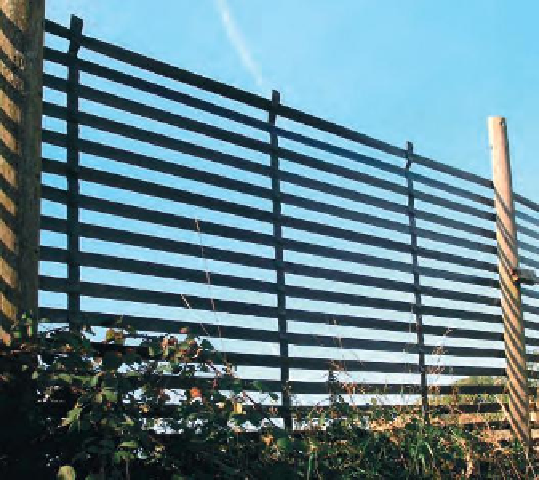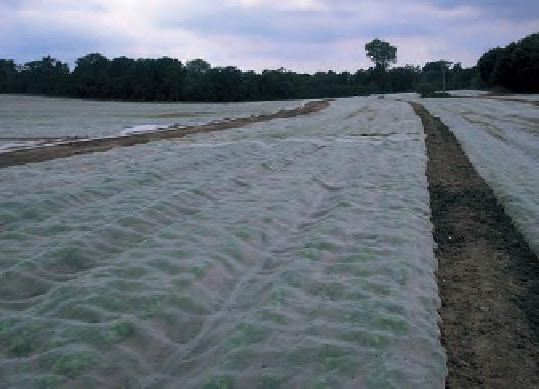Agriculture Reference
In-Depth Information
adverse conditions. The energy storage for this
purpose often makes them attractive as food for us
such as potatoes, onions and carrots.
11
Asexual reproduction
is the formation of new
individuals without fusion of gametes resulting
in genetically identical offspring.
Vegetative propagation
involves asexual
reproduction and results in a clone.
A
propagule
is any part of a plant that can be
used to create a new plant.
Natural vegetative propagation
includes bulbs, corms,
rhizomes, stolons/runners, suckers, stem and root tubers
(see pp. 91-96 and Figures 7.21, 7.18, 7.16, 7.15h,
7.14g and 7.15g).
Artificial vegetative propagation
is
also used in horticulture to produce numbers of plants
from a single parent plant including divisions, layers
and cuttings. Success is greatly increased by taking
material from
juvenile
plant material (see pp. 70-72).
In commercial horticulture,
stock plants
are used to
provide large amounts of propagating material which are
managed to ensure they remain juvenile.
(a)
Juvenile growth
is non-reproductive
(vegetative) growth, whereas
adult growth
is
reproductive (flowering).
(b)
All the plants from a single parent, a
clone
, have
the same genetic characteristics. This is important
for gardeners, but other reasons for using natural or
artificial vegetative propagation include:
X
avoids seed dormancy problems
X
quicker to reach maturity compared with growing
from seed
X
there are some cultivars that can only be
reproduced by vegetative means.
However, it should be noted that there are several
limitations of propagating plants by vegetative means
including:
X
lack of variation
X
transmission of disease (e.g. viruses see p. 264)
X
limited availability of material
X
different skills to seed sowing
X
requirement for different propagation
environments, e.g. use of mist units, cold frames
X
stable clones need to used, i.e. ones that are
unlikely to revert.
Figure 11.7
Protection for plants sown outdoors: (a)
windbreaks, natural hedging or artifi cial structures; (b)
fl eece or similar covering
Propagation of ferns
Ferns produce spores rather than seeds (see p. 52).
These spores develop in spore cases (sori) to be found
on the back of some of their fronds (see Figure 8.15)
from which the spores can be collected when ripe
(usually dark brown). The propagation of ferns from
spores is described on the companion website.
Vegetative propagation
Many plant species use their ability for vegetative
propagation in their normal pattern of development.
The production of these vegetative
propagules
, as
with the production of seed, is to increase numbers
and provide a means by which the plant survives








